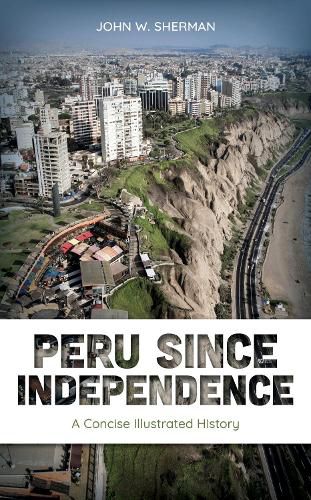Readings Newsletter
Become a Readings Member to make your shopping experience even easier.
Sign in or sign up for free!
You’re not far away from qualifying for FREE standard shipping within Australia
You’ve qualified for FREE standard shipping within Australia
The cart is loading…






Few nations in the world have trekked such a dramatic political path as Peru. Its relatively neglected post-1821 history comes alive in this concise and timely illustrated survey.
Opening chapters address the complex struggle for independence, the chaotic age of the caudillos, nascent stability under Ramon Castilla, and the War of the Pacific. Middle chapters look at state-building under Caceres and Leguia, the Aristocratic Republic, labor and social unrest, the radical thought of Mariategui, and the political dynamism of Haya de la Torre's APRA. Later chapters look at the Odria Ocenio, the governments of Belaunde and Garcia, the Sendero war, the Fujimori dictatorship, and the rise and fall of Pedro Castillo. Stand-alone chapters also explore Peruvian culture. Sensitive to issues of gender, ethnicity, and class, Peru since Independence fills a glaring gap in our understanding of a vital Latin American and Pacific Rim nation.
$9.00 standard shipping within Australia
FREE standard shipping within Australia for orders over $100.00
Express & International shipping calculated at checkout
Stock availability can be subject to change without notice. We recommend calling the shop or contacting our online team to check availability of low stock items. Please see our Shopping Online page for more details.
Few nations in the world have trekked such a dramatic political path as Peru. Its relatively neglected post-1821 history comes alive in this concise and timely illustrated survey.
Opening chapters address the complex struggle for independence, the chaotic age of the caudillos, nascent stability under Ramon Castilla, and the War of the Pacific. Middle chapters look at state-building under Caceres and Leguia, the Aristocratic Republic, labor and social unrest, the radical thought of Mariategui, and the political dynamism of Haya de la Torre's APRA. Later chapters look at the Odria Ocenio, the governments of Belaunde and Garcia, the Sendero war, the Fujimori dictatorship, and the rise and fall of Pedro Castillo. Stand-alone chapters also explore Peruvian culture. Sensitive to issues of gender, ethnicity, and class, Peru since Independence fills a glaring gap in our understanding of a vital Latin American and Pacific Rim nation.